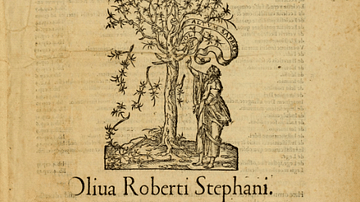Review

| Rating: | |
|---|---|
| Title: | Creating the Qur’an: A Historical-Critical Study |
| Author: | Stephen J. Shoemaker |
| Audience: | University |
| Difficulty: | Medium |
| Publisher: | University of California Press |
| Published: | 2022 |
| Pages: | 370 |
In "Creating the Qur'an," Stephen Shoemaker, a specialist on early Christianity and Islam at the University of Oregon, aims to convince readers and the field of Islamic studies at large to reconsider their dating of the origins of Islam's premier scripture. This work assumes readers to have some familiarity with both the subject matter and the state of academic discourse over the subject matter, but the book is comprehensive enough to guide a sufficiently interested reader's further research.
Stephen J. Shoemaker’s Creating the Qur’an: A Historical-Critical Study is, in brief, an argument for placing the “closure” of the Qur’an, its development into the definitive form we know today, in 8th century Iraq and Syria, as opposed to 7th century Arabia. As a revisionist challenge to the consensus in its field, this book is in constant conversation. References to works written centuries apart, or to scholars differing in opinion, follow each other in quick succession. The University of Oregon professor, a specialist in early Christianity who has published four books on early Islam since 2011, considers the available evidence in a critical spirit and outlines a plausible narrative from both the cherished motifs of the Islamic tradition and the traces of variant texts, roads not taken, and witnesses to forgotten events.
Shoemaker has organized his book as a journey away from, and then a gradual return to, the textual criticism of primary sources. The first two chapters contain most of the positive evidence for the book’s argument. Shoemaker first describes the disagreements between the earliest accounts of Muslim scholars, all written at a distance of a century or more from the described events, over the exact figures responsible for the compilation of the definitive Qur’an. Shoemaker then discusses the evidence concerning the figures to whom he assigns the credit: the caliph Abd al-Malik and his lieutenant al-Hajjaj ibn Yusuf. He first quotes accounts in which these figures and their contemporaries refer to the suras of the Qur’an by name, as if they then circulated as independent texts, as well as cryptic references to unofficial or variant compilations of Muhammad’s teachings circulating in the empire of the caliphs.
The middle chapters of the book are a more free-ranging inquiry into how evidence can be used or misused to formulate and answer questions about the past. Shoemaker displays his keen perspective on landmark studies, key premises, and ongoing discoveries, all of which he describes engagingly and thoroughly. Evaluating radiocarbon dating in chronological disputes, Shoemaker concludes that it has its drawbacks. For a book generally short on images and maps, this section is helpfully stocked with tables collating the radiocarbon dating publications and results referenced within the chapter.
In Chapters Four through Eight, Shoemaker brings together research on human memory and transitions to literacy. He argues that as Muhammad's followers traveled the world and built homes among strangers, building and defending what was then the largest empire west of China, their oral and written retellings of Muhammad's teachings most likely remained fungible, a state of affairs that made the creation of an unchanging scripture necessary.
In Chapter Nine, Shoemaker argues that in sections of the Qur'anic text ostensibly addressing a Meccan or Medinan audience, the text describes a setting more akin to Iraq and the eastern Mediterranean, from the agricultural products listed in certain passages to the assumed familiarity of the audience with the Abrahamic traditions, than to western Arabia. So the book concludes: though bearing the indelible influence of the Arabian religious movement that preceded it, the Qur’an as we know it was born out of the recollections, desires, and dreams of the conquering Arabs’ successors, the first generations of Iraqi and Syrian Muslims.
This book, intended for specialists, poses a unique challenge to the uninitiated reader, whose first task may be consulting other resources to gain familiarity with the subject period's geography, chronology, and politics. Reading this book soon takes on the aspect of sitting next to one person in a crowded room. Fully understanding the conversation would require moving around and listening to the others. For the reader willing to make such a journey, Shoemaker’s Creating the Qur’an is an excellent survey of the terrain.
Cite This Work
APA Style
Arul, B. (2024, January 31). Creating the Qur’an: A Historical-Critical Study. World History Encyclopedia. Retrieved from https://www.worldhistory.org/review/393/creating-the-quran-a-historical-critical-study/
Chicago Style
Arul, Boopala. "Creating the Qur’an: A Historical-Critical Study." World History Encyclopedia. Last modified January 31, 2024. https://www.worldhistory.org/review/393/creating-the-quran-a-historical-critical-study/.
MLA Style
Arul, Boopala. "Creating the Qur’an: A Historical-Critical Study." World History Encyclopedia. World History Encyclopedia, 31 Jan 2024, https://www.worldhistory.org/review/393/creating-the-quran-a-historical-critical-study/. Web. 25 Apr 2025.




